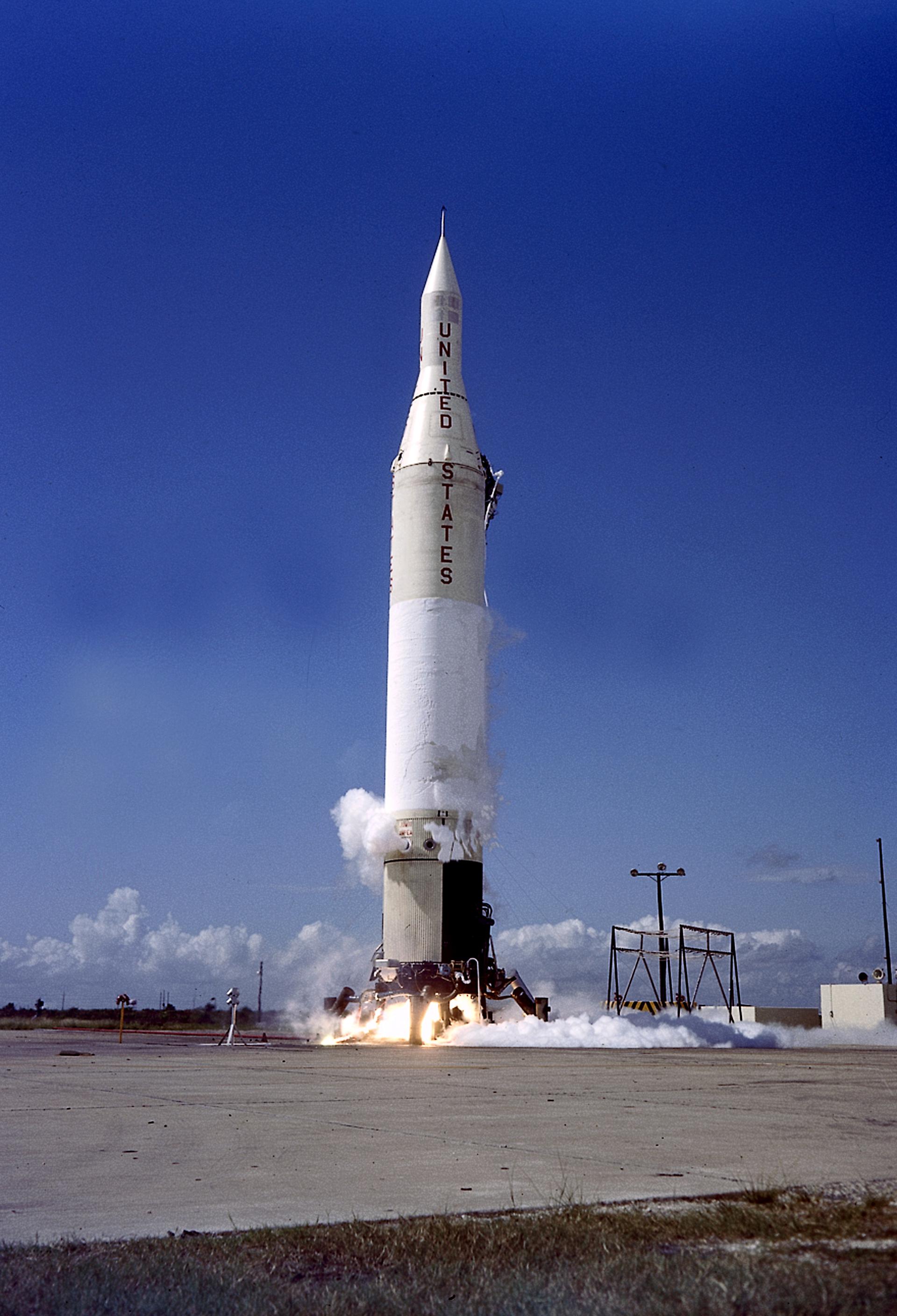
Juno II
In-activeArmy Ballistic Missile Agency (ABMA)
Dec. 6, 1958
Description
Juno II was an American space launch vehicle used during the late 1950s and early 1960s. It was derived from the Jupiter missile, which was used as the first stage.
Specifications
-
Minimum Stage
3 -
Max Stage
4 -
Length
24.0 m -
Diameter
2.67 m -
Fairing Diameter
― -
Launch Mass
55.0 T -
Thrust
654.0 kN
Family
-
Name
Juno II -
Family
― -
Variant
― -
Alias
― -
Full Name
Juno II
Payload Capacity
-
Launch Cost
― -
Low Earth Orbit
41.0 kg -
Geostationary Transfer
Orbit
― -
Direct Geostationary
― -
Sun-Synchronous Capacity
―
Army Ballistic Missile Agency
Government
None
ABMAThe Army Ballistic Missile Agency was formed to develop the U.S. Army's first large ballistic missile. The agency was established at Redstone Arsenal on 1 February 1956, and commanded by Major General John B. Medaris with Wernher von Braun as technical director.
Juno II | S-45A
Army Ballistic Missile Agency | United States of AmericaCape Canaveral SFS, FL, USA
May 24, 1961, 7:48 p.m.
Juno II | Explorer 11
Army Ballistic Missile Agency | United States of AmericaCape Canaveral SFS, FL, USA
April 27, 1961, 2:16 p.m.
Juno II | S-45
Army Ballistic Missile Agency | United States of AmericaCape Canaveral SFS, FL, USA
Feb. 25, 1961, 12:13 a.m.
Juno II | Explorer 8
Army Ballistic Missile Agency | United States of AmericaCape Canaveral SFS, FL, USA
Nov. 3, 1960, 5:23 a.m.
Juno II | NASA S-46
Army Ballistic Missile Agency | United States of AmericaCape Canaveral SFS, FL, USA
March 23, 1960, 1:35 p.m.
Juno II | Explorer 7
Army Ballistic Missile Agency | United States of AmericaCape Canaveral SFS, FL, USA
Oct. 13, 1959, 3:30 p.m.
Status: Launch Successful
Mission:
Explorer 7 was designed to measure solar x-ray and Lyman-alpha flux, trapped energetic particles, and heavy primary cosmic rays. Secondary objectives included collecting data on micrometeoroid penetration, molecular sputtering and studying the Earth-atmosphere heat balance.
Low Earth OrbitJuno II | Beacon
Army Ballistic Missile Agency | United States of AmericaCape Canaveral SFS, FL, USA
Aug. 15, 1959, 12:31 a.m.
Juno II | NASA S-1
Army Ballistic Missile Agency | United States of AmericaCape Canaveral SFS, FL, USA
July 16, 1959, 5:37 p.m.
Status: Launch Failure
Mission:
The S-1 satellite was a geoscience satellite equipped with a suite of scientific instruments to study the environment around the Earth. It was destroyed 5 seconds into launch when the launch vehicle exploded due to an issue with the launch vehicles power supply.
Elliptical OrbitJuno II | Pioneer 4
Army Ballistic Missile Agency | United States of AmericaCape Canaveral SFS, FL, USA
March 3, 1959, 5:10 a.m.
Juno II | Pioneer 3
Army Ballistic Missile Agency | United States of AmericaCape Canaveral SFS, FL, USA
Dec. 6, 1958, 5:44 a.m.
Falcon 9
Transporter 15 (Dedicated SSO Rideshare)
Space Launch Complex 4E - Vandenberg SFB, CA, USADedicated rideshare flight to a sun-synchronous orbit with dozens of small microsatellites and nanosatellites for commercial and government customers.
Soyuz 2.1a
Soyuz MS-28
31/6 - Baikonur Cosmodrome, Republic of KazakhstanSoyuz MS-28 will carry three cosmonauts and one astronaut to the International Space Station aboard the Soyuz spacecraft from the Baikonur Cosmodrome…
Nuri
CAS500-3
LC-2 - Naro Space Center, South KoreaCAS500-3 is a South Korean Earth observation satellites to be used by the Ministry of Science and ICT for space technology verification and space sci…
Angara 1.2
Kosmos (Unknown Payload)
35/1 - Plesetsk Cosmodrome, Russian FederationNote: Payload identity and Cosmos series numbering not confirmed. Unknown Payload(s) for the Russian military.
Long March 2F/G
Shenzhou 22
Launch Area 4 (SLS-1 / 921) - Jiuquan Satellite Launch Center, People's Republic of ChinaShenzhou 22 (Chinese: 神舟二十二号) will be the 22nd flight of the Shenzhou program. The spacecraft will be launched without crew to replace Shenzhou 20 th…

